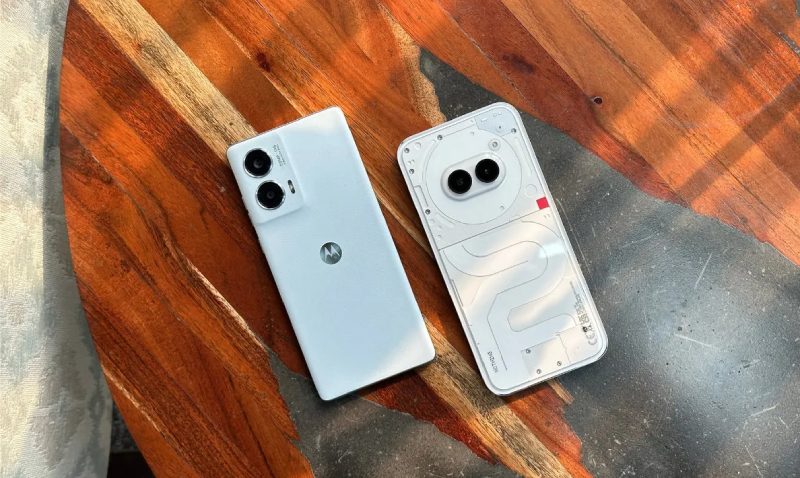The Edge 50 Fusion smartphone was unveiled by Motorola, expanding the Edge 50 line. An IP68 dust and water resistance, vivid display, Qualcomm CPU, and quick charging capabilities are just a few of the qualities that set this phone out as a mid-ranger. At Rs 22,999, its price point attempts to draw in clients looking for a dependable but reasonably priced choice.
With its distinctive Glyph interface and impressive specs, the Nothing Phone (2a) is a competitor in the same price range. The Nothing Phone (2a) is a gadget that appeals to people searching for a unique device with timely software upgrades. It is priced at Rs 23,999 (savings to Rs 22,999 with bank incentives).
Specifications Comparison
The Motorola Edge 50 Fusion and the Nothing Phone (2a) are briefly compared here.
Display
Full-HD 6.7-inch screens are included on both phones. That being said, the Nothing Phone (2a) chooses an AMOLED display with a peak brightness of 1300 nits, while the Edge 50 Fusion employs a P-OLED screen with a peak brightness of 1600 nits.
Chipset
As for the chipset, the Phone (2a) employs a Dimensity 7200 Pro, while the Edge 50 Fusion has an octa-core Snapdragon 7s Gen 2. While both run on Android 14, with the Phone (2a) sporting Nothing OS 2.5.5, they both provide up to 12GB of RAM and 256GB of internal storage.
Cameras
For wide and ultrawide images, the Phone (2a) has two 50MP cameras, while Motorola’s offering has a 50MP main camera with OIS and a 13MP ultrawide camera. With a 32MP selfie camera, both can capture videos in 4K@30 frames per second.
Battery
The 5000mAh battery powering both phones is enhanced by the Edge 50 Fusion’s quicker 68W cable charging capability, while Nothing’s 45W output is insufficient.
What should you Purchase?
It appears like the Motorola Edge 50 Fusion is a superior choice if you value speedier charging, a vivid display, and durability. Reliability and convenience are provided by its IP68 dust and water resistance, P-OLED display with increased peak brightness, and 68W wired charging capability.
Therefore, the Nothing Phone (2a) might be a better option if you value a distinctive design, prompt software updates, and marginally superior screen protection. It offers a unique user experience with its Glyph interface and promising specifications in combination with the Nothing OS 2.5.5. Furthermore, photography diversity is provided by the twin 50MP cameras.
Your decision will ultimately be based on your personal priorities and preferences in terms of software experience, camera capabilities, durability, and display quality. Choose a phone based on characteristics that are most important to you and that best suits your requirements and tastes.


